© 2014-


Radio Mercur - History (3)
Radio Mercur had become a huge commercial success, but this itself led to internal conflict -
Matters came tp a head in mid 1961 when a number of Radio Mercur staff broke away from the company to start their own offshore station. The new station -
DCR’s style and programme content differed significantly from Radio Mercur, with more classical music, operas, plays and discussions being broadcast. In addition commercials were carefully placed between programmes to avoid the ‘over commercialisation’ which was now heard on Radio Mercur.
In the face of c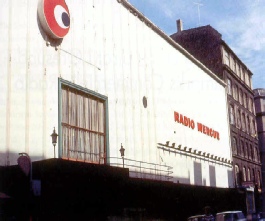 ompetition from DCR, Radio Mercur immediately increased its Danish language broadcasting hours to 15 hours a day. At about the same time Radio Mercur also acquired a theatre (‘New Scala’ ) in central Copenhagen, which it renamed Radio Mercur City.
ompetition from DCR, Radio Mercur immediately increased its Danish language broadcasting hours to 15 hours a day. At about the same time Radio Mercur also acquired a theatre (‘New Scala’ ) in central Copenhagen, which it renamed Radio Mercur City.
With two radio ships now broadcasting from off its coast, but no legislation as yet to outlaw them, the Danish authorities felt they needed to take some action to make life as difficult as possible for the stations. On 29th September 1961 the Danish Post Office instructed coastal radio stations not to accept communications to or from the radio ships, except in emergency situations.
As well as creating practical difficulties for the operators this ban also had programming implications, particularly for Radio Mercur which had previously used Lyngby Radio to transmit interviews and news reports to their ship for re-
In November 1961 the original Radio Mercur vessel, Cheeta returned from Norwegian waters to a new anchorage at Elefantgrunden, between Fyns Hoved, Funen and Reersa, Zeela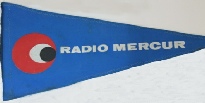 nd and resumed her role as a radio ship enabling Radio Mercur to achieve wider coverage of Denmark by the introduction of a second service. Transmissions of what became Radio Mercur (West) started from this anchorage on 25th November, using two directional aerials to beam local programmes to Aarhus and Ordense.
nd and resumed her role as a radio ship enabling Radio Mercur to achieve wider coverage of Denmark by the introduction of a second service. Transmissions of what became Radio Mercur (West) started from this anchorage on 25th November, using two directional aerials to beam local programmes to Aarhus and Ordense.
A few weeks later, during a storm on 14th December 1961, the Cheeta's new aerial mast collapsed and Radio Mercur (West) was temporarily put off the air. It was then decided that the two ships in the Radio Mercur network should swap places -
Radio Mercur programmes were still recorded in the Copenhagen studios but now two copies of tapes were made, one for each ship. The same pre-
Pre-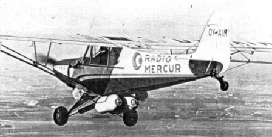 n private aeroplane.
n private aeroplane.
In December 1961 talks started between representatives of DCR and Radio Mercur, with a view to a merger of the rival stations, under the Radio Mercur call-
1962
DCR ceased separate transmissions on 29th January 1962 and Radio Mercur (East) programmes from Cheeta were also relayed from the Lucky Star. Meanwhile Cheeta 2 continued to broadcast Radio Mercur (West) programmes.
With three ships (Cheeta, Cheeta 2 and Lucky Star) at its disposal Radio Mercur now had the potential to achieve complete coverage of Denmark and become a truly national station. However, shortly after the m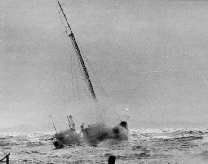 erger with DCR the Cheeta (then still anchored off Copenhagen) found herself in difficulties during a gale on 12th February 1962 and put out a distress call. The ship was assisted to Langeline Quay in Copenhagen by a tug and once in port she was immediately detained by police. Investigations subsequently revealed that after Panama withdrew its registration (in August 1958) the ship had remained stateless, although the station's owners had always claimed the vessel was legally registered in Honduras.
erger with DCR the Cheeta (then still anchored off Copenhagen) found herself in difficulties during a gale on 12th February 1962 and put out a distress call. The ship was assisted to Langeline Quay in Copenhagen by a tug and once in port she was immediately detained by police. Investigations subsequently revealed that after Panama withdrew its registration (in August 1958) the ship had remained stateless, although the station's owners had always claimed the vessel was legally registered in Honduras.
Fortunately, because of the recent merger, the former DCR ship Lucky Star was able to fully take over the broadcasts of Radio Mercur (East) instead of just relaying the Cheeta's output.

Radio Mercur’s private aeroplane used to deliver programme tapes when the weather was too rough for the tender

Click on picture to enlarge
Cheeta in difficulties during a storm
Photo: Ingemar Lindqvist
The Radio Mercur Theatre, used for recording concerts and variety shows for later transmission from the ships.

History
Key Dates
Ship and Location
Technical
Staff
Programmes





For more about
Radio Mercur visit
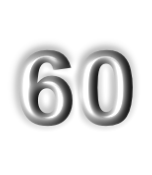
YEARS

In the Special Exhibitions Gallery on the Ground Floor

Treasure Chest


Back to Radio Mercur

Back to Scandinavia Gallery

